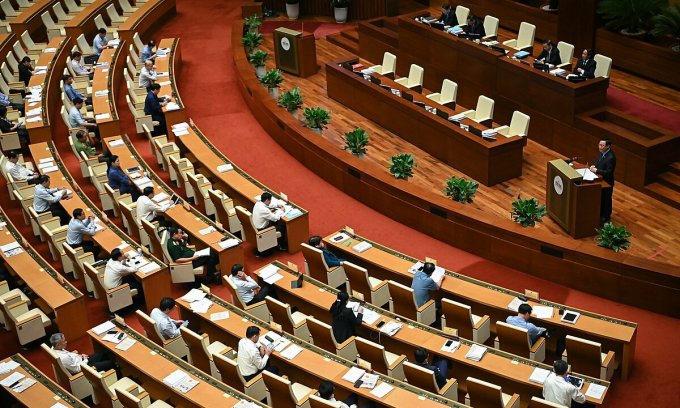Regulations on the right to copy the work and limit the right to copy the work in Vietnam

In fact, today, the issue of copyright of works is still a pain; attracted both domestic and international attention. Many individuals and organizations also take advantage of loopholes in the copyright of works to copy unlimitedly. It is because of this that causes many problems in intellectual property rights in general; resulting in copyright regulations and limitations on the right to copy the work.
To understand more about these regulations, please consult with Lawyer X: Regulations on the right to copy the work and limit the right to copy the work in Vietnam
Legal grounds
- Intellectual property law
- Decree 22/2018/ND-CP
Regulations on the right to copy works
The right to copy a work is one of the exclusive property rights of the author. By the owner making or authorizing others to make copies of the work; by any means or form. Including making copies in electronic form.
Except for exceptions provided by law, all forms of reproduction of a work must have the consent of the copyright owner. Copying is posed in two contexts:
Copying published works
Copy unpublished or published works.
Publication of a work is the first time that a work has been made a certain number of copies to the public, usually. It is a publication published by a licensed printer. If there is an infringement of the Right to Copy, the copyright owner will easily have evidence to prove and protect his/her rights.
In the case of unpublished works, the proof is somewhat more difficult. Because at that time, the copyright owner must prove his/her rights that: the work was created by him/her independently or he/she is the one given or inherited; or to be transferred the property rights of the copyright; the work only needs to be formed in a certain recognizable form; copyright is protected by law.
For example: a PhD student is about to officially defend his doctoral thesis when he discovers the content of his thesis; has been copied almost entirely by someone else as a monograph; and has been published, it is not easy at this time to prove an infringement.
So before the work is officially published; It is necessary to have a mechanism to protect the copyright of PhD students. According to the law, the PhD student’s thesis can only be sent to the committee members by hard file; but the possibility of the thesis content being “stolen” is still possible; if there is no specific provision specifically for this case.
Exceptions to the Right to Copy
Pursuant to Clause 2, Article 25 of the Consolidated Document No. 07/VBHN-VPQH dated June 25, 2019 Intellectual Property Law).
Self-reproduction must satisfy the condition that “must not affect the normal exploitation of the work, not prejudice the rights of the author or copyright holder; must provide information on the author’s name and the origin and origin of the work.”
Self-reproducing a copy for the purpose of personal research and teaching;
Copy the work to store in the library for research purposes. This provision does not apply to architectural works, visual works, computer programs.
Regulations on restrictions on the right to copy works
Pursuant to Clause 10, Article 4 of the Law on Intellectual Property (IP), explaining the term reproduction: “is the making of one or more copies of a work or phonogram or video recording by any means or form, including making copies in electronic form”.
The provision within the limitation of that work is that the work has been published; this is an important condition that is very clearly recognized in the legal regulations of Vietnam; and international treaties and laws of other countries.
This is a testament to whether limits are placed on the exclusive rights of the right holder; but to a certain extent, the law is still trying to protect the rights of creators; or invest in creating works. This is also supporting the author to bring work that is really valuable to society. It is only when the work is published that rights restrictions are set.
Pursuant to Clause 2, Article 20 of Decree No. 22/2018/ND-CP, which defines: “Disclosure of a work is the release of a work to the public with a reasonable number of copies to meet the needs of the public depending on the needs of the public. according to the nature of the work, performed by the author or copyright holder or by another individual or organization with the consent of the author or copyright holder. Publication of a work does not include the performance of a theatrical, cinematographic or musical work; read in public a literary work; broadcasting literary and artistic works; display visual works; building works from architectural works.”
Thus, the current Vietnamese Law only recognizes published works; rely on a reasonable number of copies available to the public; without admitting the performance or display of the work to the public. While the Laws of some other countries (eg USA, Japan, Sweden) consider publication as when copies; with the consent of the author is put up for sale; or distributed to the public in the above forms.
Right to cite work in education
Quoting is understood as “withdrawing a sentence or a paragraph from another work to clarify one’s argument”; or has the author’s definition: “citation is the use of an (insignificant) work of another person to highlight the author’s intention”. It can be said that these definitions are still general in nature; without specifying the scope and limits of legal citation.
Pursuant to Article 23 of Decree No. 22/2018/ND-CP dated February 23, 2018 of the Government detailing a number of articles; and measures to implement the 2005 Intellectual Property Law and the 2009 Law amending and supplementing a number of articles of the Intellectual Property Law; regarding copyright and related rights, as follows:
Cases where citation of a work is not considered an infringement of copyright include:
– Reasonably cite the work without misleading the author for commenting; or illustrated in his or her work;
- Quoting works without misleading the author’s intention to write articles; used in periodicals; in radio and television programs, documentaries;
- Quoting works for teaching in schools; without misleading the author, not for commercial purposes.
Thus, according to the law, the right to cite works is only considered legal; if the following conditions are satisfied:
The citation must ensure reasonableness;
Citation must be accurate;
The purpose of a citation is to use the information cited; to clarify their ideas in their work (for illustration, commentary or for coverage in press publications); and not for commercial purposes.
Copying and quoting are two acts performed in relation to each other; in research and training activities, but are two independent acts, which we need to make a distinction.
Firstly, about the act of copying: is to make copies of works (it is possible to copy all or part of works) to make research and study materials; also cite works (quoting the ideas of other authors, in their own language; or quoting other authors’ words and phrases exactly as they did, in their works and used in their own works. ).
Second, in terms of purpose: copying is making copies of a work from the original work. From there, the copyist still has the full content of the work; without having to purchase the original work of the author; to cite is to use someone else’s work to clarify one’s own ideas; in his research. However, many students and lecturers at university training institutions; copied the work in the citation. This is understood that many theses, theses, essays… of learners have copied the work of others in their own works; and always use the ideas of other people’s works into your own ideas without citing or citing specific sources.
Related article:
- Regulations on copyright for musical works in the digital environment in Vietnam
- Term of copyright protection for foreign work
- Acts of infringing copyright on musical works
Frequently asked questions
Copying a work for archiving in a library for the purposes of research specified at Point dd, Clause 1, Article 25 of the Intellectual Property Law is a reproduction of no more than one copy. Libraries may not copy and distribute copies of works to the public, including digital copies.
This monopoly can lead to limiting the community’s access to innovative products, distorting competition, and hindering the circulation of goods and services.
Therefore, it is necessary to balance the interests of the holders of intellectual property rights and the interests of the public in accessing and using works, national and international laws all have provisions on limitations. copyright, of which the right to copy is not an exception.
Services of Lawyer X
Prestigious professional services: Firstly, the team of consultants and consultants for many years in the field of civil status, and customer support.
On-time: Certainly, with the motto “Get your lawyer right at your fingertips”, we ensure the service always performs on time. The rights and interests of customers always come first.
Cost: Besides, Lawyer X’s service costs are highly competitive; depending on the nature of the particular case. So, we want our guests to have the best possible service experience. Therefore, costs which guaranteed to be the most suitable and economical for customers.
Confidentiality of client information: Finally, all brand personal information of client Lawyer X will be 100% confidential.
Please contact us immediately with questions about the “Regulations on the right to copy the work and limit the right to copy the work”
Contact LSX Lawfirm
Finally, we hope this article is useful for you to answer the question: “Regulations on the right to copy the work and limit the right to copy the work”. If you need any further information, please contact LSX Law firm: at +84846175333 or Email: [email protected]
Conclusion: So the above is Regulations on the right to copy the work and limit the right to copy the work in Vietnam. Hopefully with this article can help you in life, please always follow and read our good articles on the website: lsxlawfirm.com




